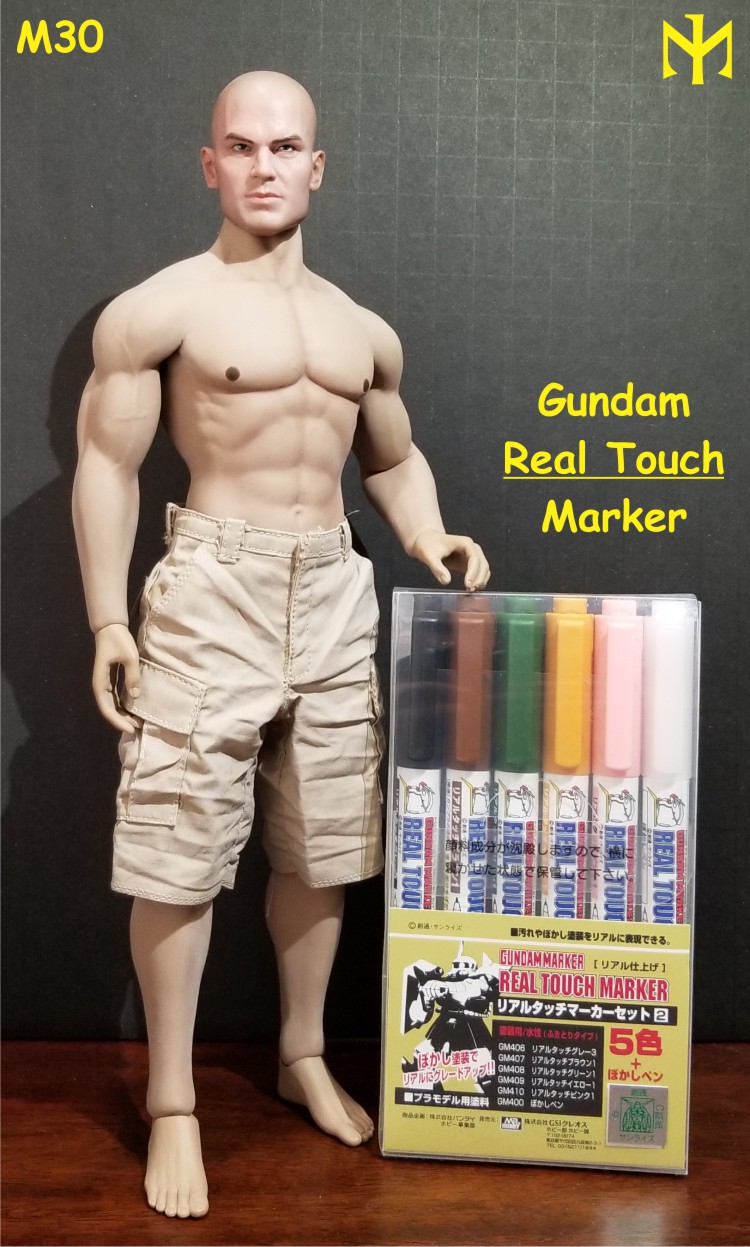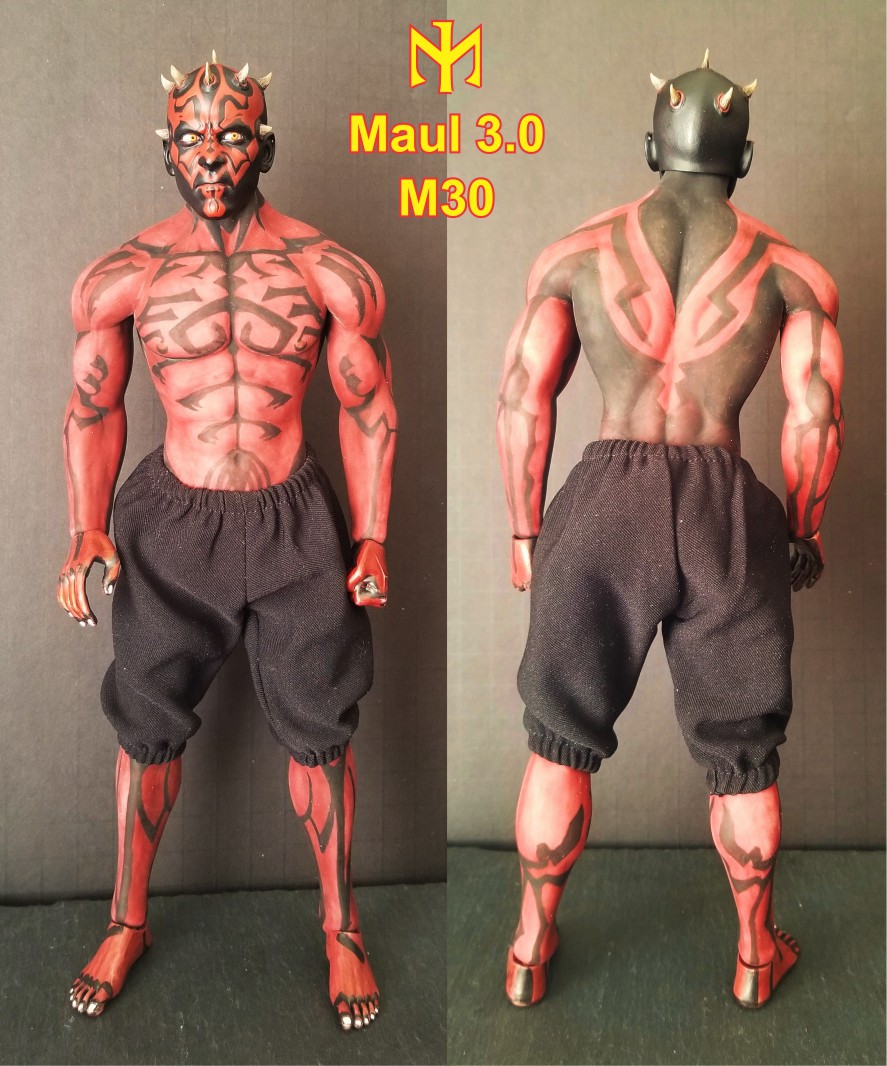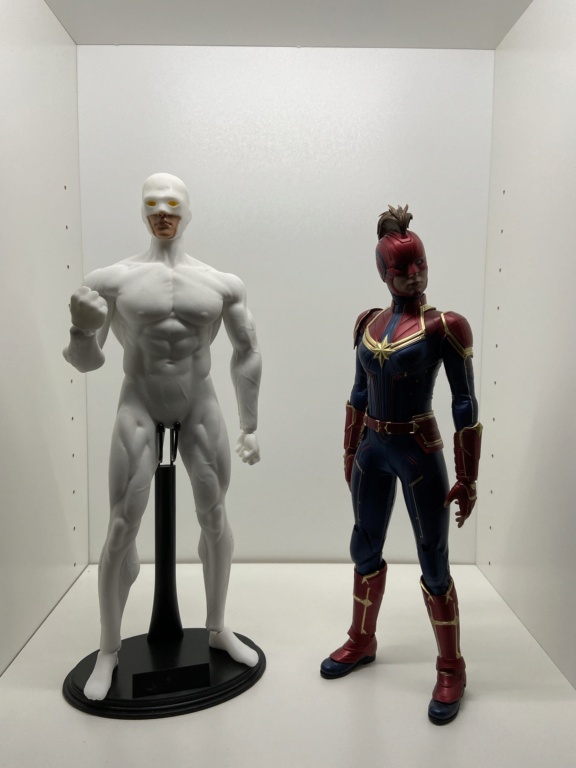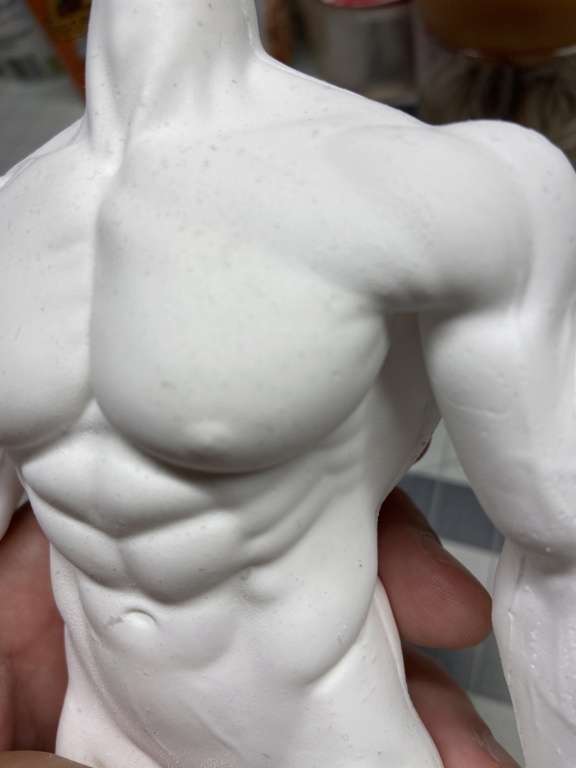I can now confirm the successful use of
Gundam Real Touch Marker for painting details on the TBLeague rubbery TPE body surface, a technique first suggested by
CaseyTong. I first tested a small spot on the part of the neck that will always be obscured by a head. As CaseyTong suggested, I soaked up any excess liquid ink on the surface with a q-tip. Then I left it alone for several days. After this, I discovered the coloring had remained (so it was not absorbed, like some stains, by the material), and it proved impossible to smudge or remove it with either a dry q-tip, a wet one, or actual washing with soap and water. I then replicated the experiment on a body where I had not yet applied the oil pastel method on the nipples. Given the small areas in question and the use of a stencil, the application of even a single layer of marker ink was very even and opaque (it will probably turn out different if you are trying to paint a larger area of the surface). I soaked up the ink with a q-tip again and removed the stencil. This time I tested within minutes with a dry and with a wet q-tip, and there was no smudging or transfer. I have not yet tried washing it off with soap and water, but the earlier experiment suggests that will not remove the coloring.

For more photos and details, see an update to the
Painting TBLeague / Phicen Nipples Tutorial.
While I cannot comment on any long-term effects, the real touch marker method appears to be successful. Since real touch markers come with two applicators on each end, one larger and one smaller, I will be testing the smaller applicator's performance for painting body hair. It is not finer than the tips I have used before, but it may be better at allowing a good ink flow and the ink certainly seems to work on the TPE surface. I have not tested this on a TPE surface already painted with oil pastel, but will report on this when it happens. I should note that this method can be expected to work well if you are satisfied with the color as applied (thinly or not) on the surface. You are unlikely to be able to blend colors (certainly not lighter colors), unless you manage to somehow remove them and mix them separately before applying them to the surface.
Thank you for the suggestion, CaseyTong.















